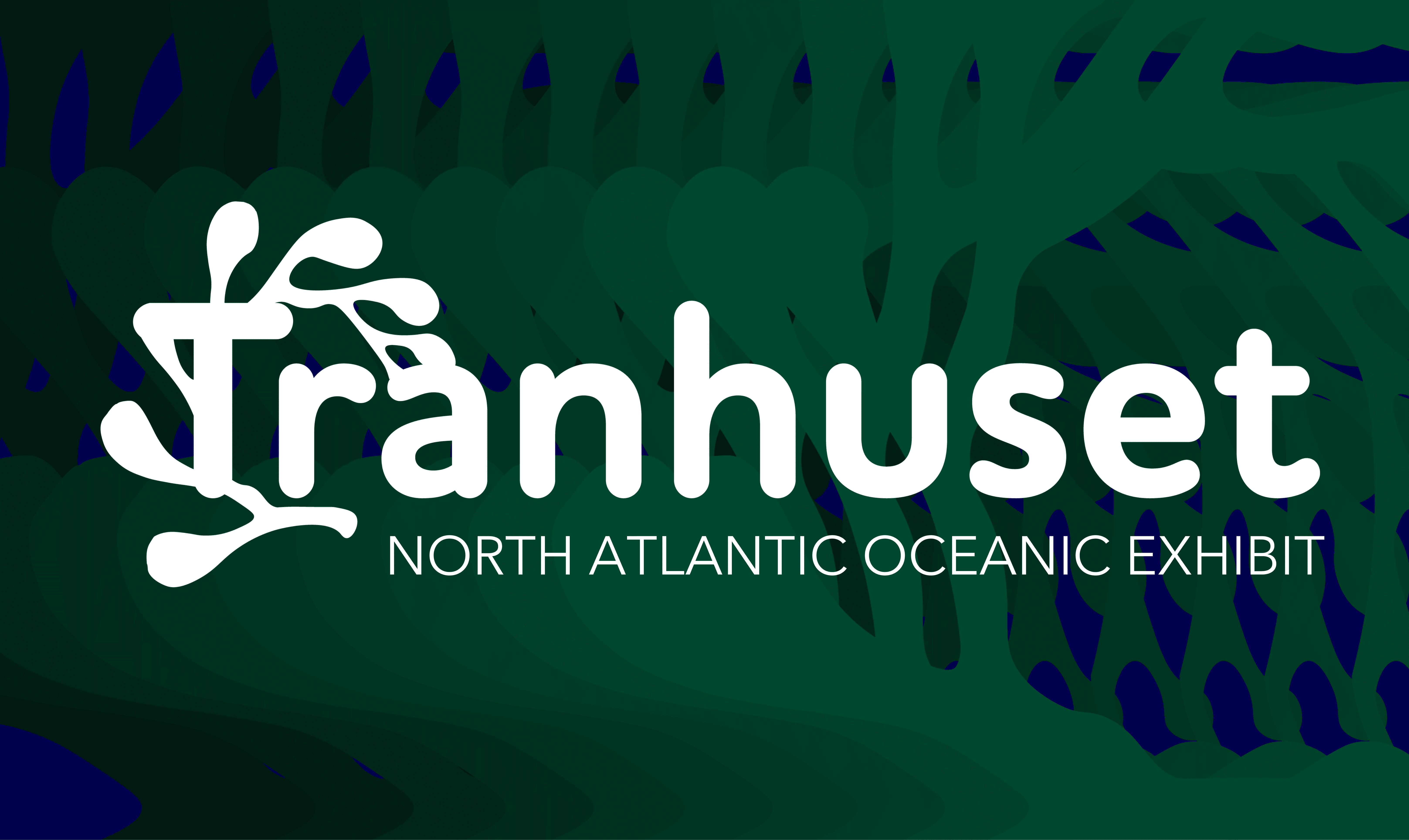
North Atlantic Museum: Organic and Orthogonal
Tranhuset North Atlantic Oceanic Experience
4 months
Shipped
December, 2024
Overview
The North Atlantic Museum, located in the harbor of Copenhagen, has received grants to establish a new combined experience and learning center that will educate Danish locals about life in the North Atlantic. I have been given the exciting opportunity to assist in developing the new design system for the new Tranhuset exhibit.
Research
I began this project by researching, collecting data, and finding creative inspiration in my environment. I discussed business goals with the museum board, interviewed potential visitors to understand user needs, and visited the Louisiana Modern Art Museum in Denmark to gain inspiration from Anna Atkins’ cyanotypes of seaweed exhibit. I found that the greatest needs for this design were consistency and accessibility for families.
Question-storming
At the beginning of every design process, I give myself 60 seconds of undivided time to "questionstorm". I jot down as many questions as I possibly can without coming up with any answers.
"What oceanic symbiotic elements stand out to me?" "This kelp has a strange shape. how does it break down geometrically?" "What if I diagram the kelp strand to create a simple graphic?" "How can I make this graphic dynamic?" "Could the kelp be maluable?" "What if I find a font that carries the same geometric qualities?" "How can I create a mascot that derives from the same geometry?" "What makes a child curious?" "What makes an adult curious?" "What colors make people curious?" "How do I invoke curiosity about learning through a design system?"
Iterate and Explore
I then began to iterate, sketch, and play around with some ideas. I created a precedence map to demonstrate how the exploration of a few of these questions led to my final product.
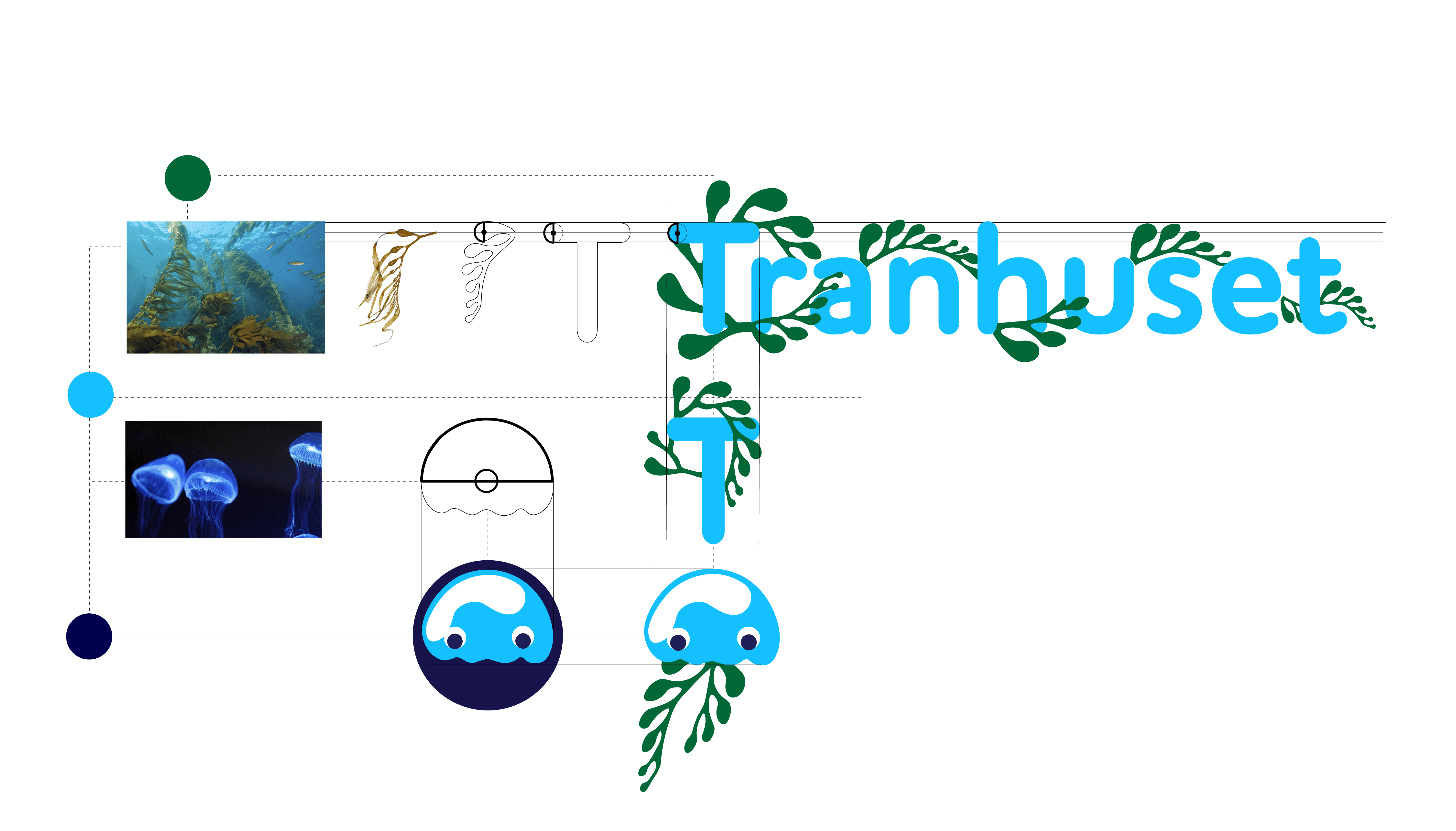
Define
Using this precedence map, I could define my fonts, colors, character, and graphic motifs, and create the basic building blocks to help me move into the next phase of my design consistently.
Test
I met with peers, professors, and once again with the design director to make sure my design was hitting the brand comms and goals I originally had. Throughout this testing phase, I received critical feedback that my logo needed more variations and that my character needed more facial expressions, so I went back and reiterated a few times before moving into the execution phase.
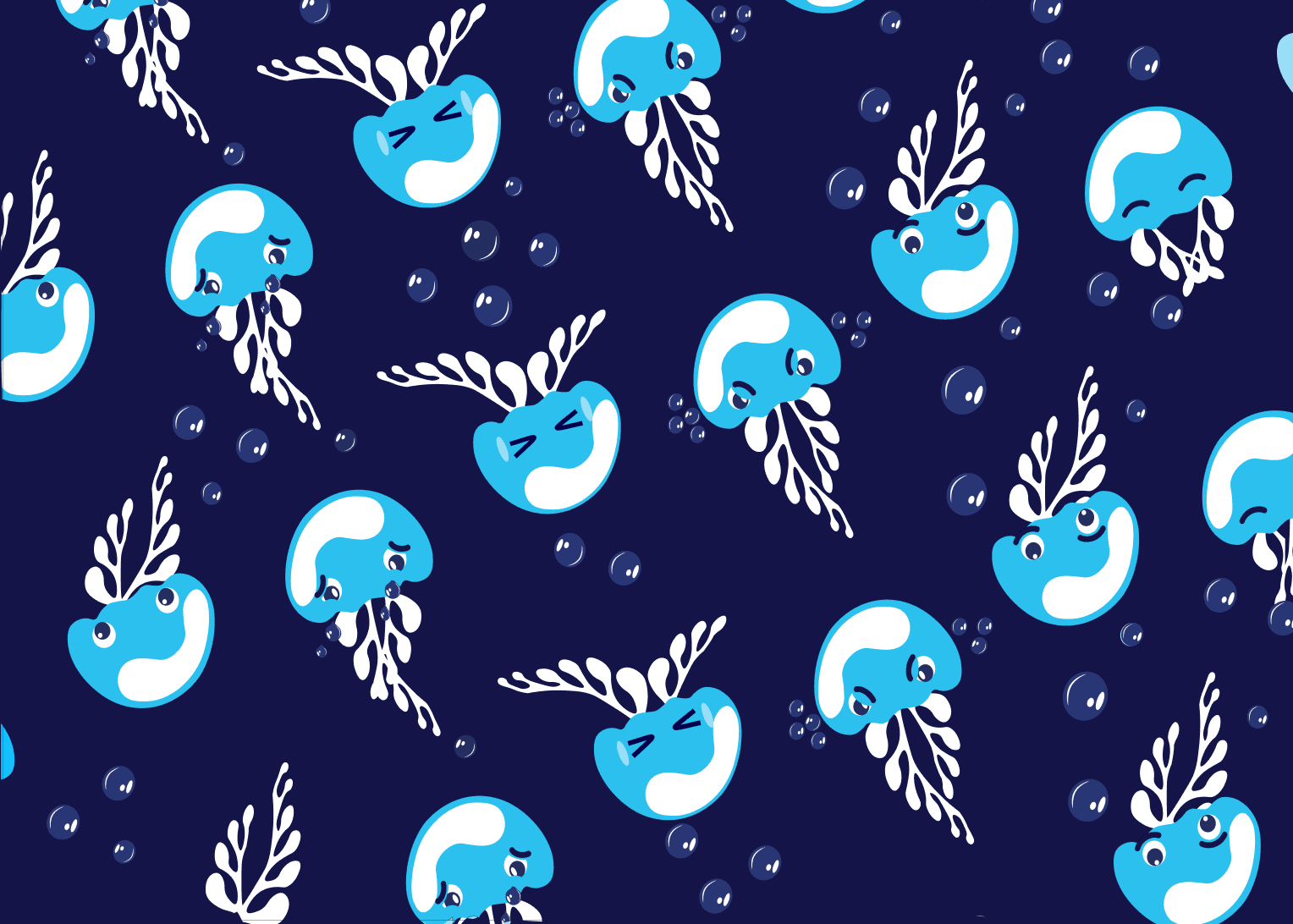
Execute
Once I defined my rules, colors, and mascot, I was able to begin the deliverables to present to the board. This included UI for the Tranhuset app, a social media post, and some printed graphics.
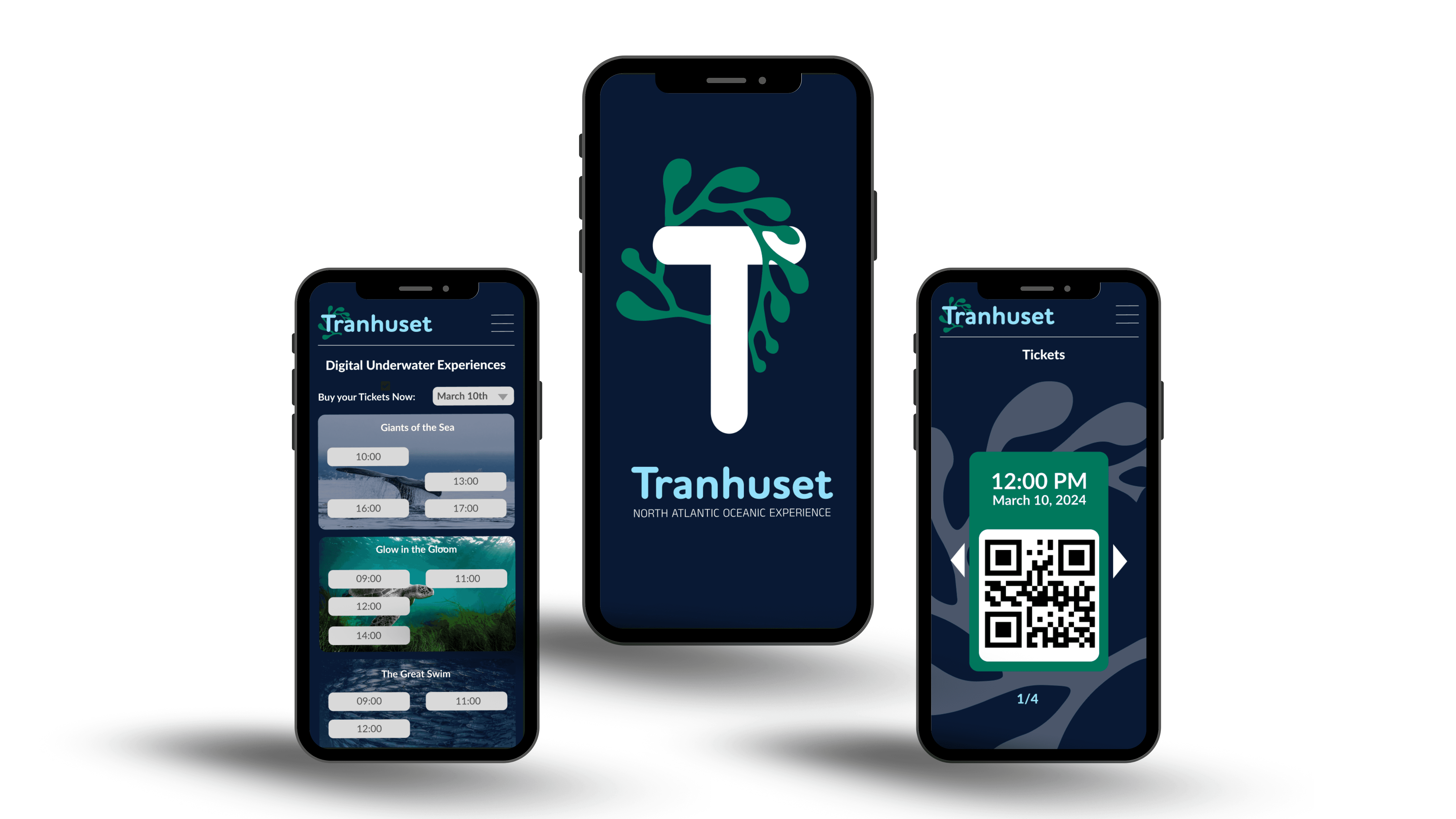
For a mockup social media post, I took all the components of my brand guidelines and tweaked them to create this "Spotify Wrapped", demonstrating statistics and fun facts throughout a year of the Tranhuset Exhibit.
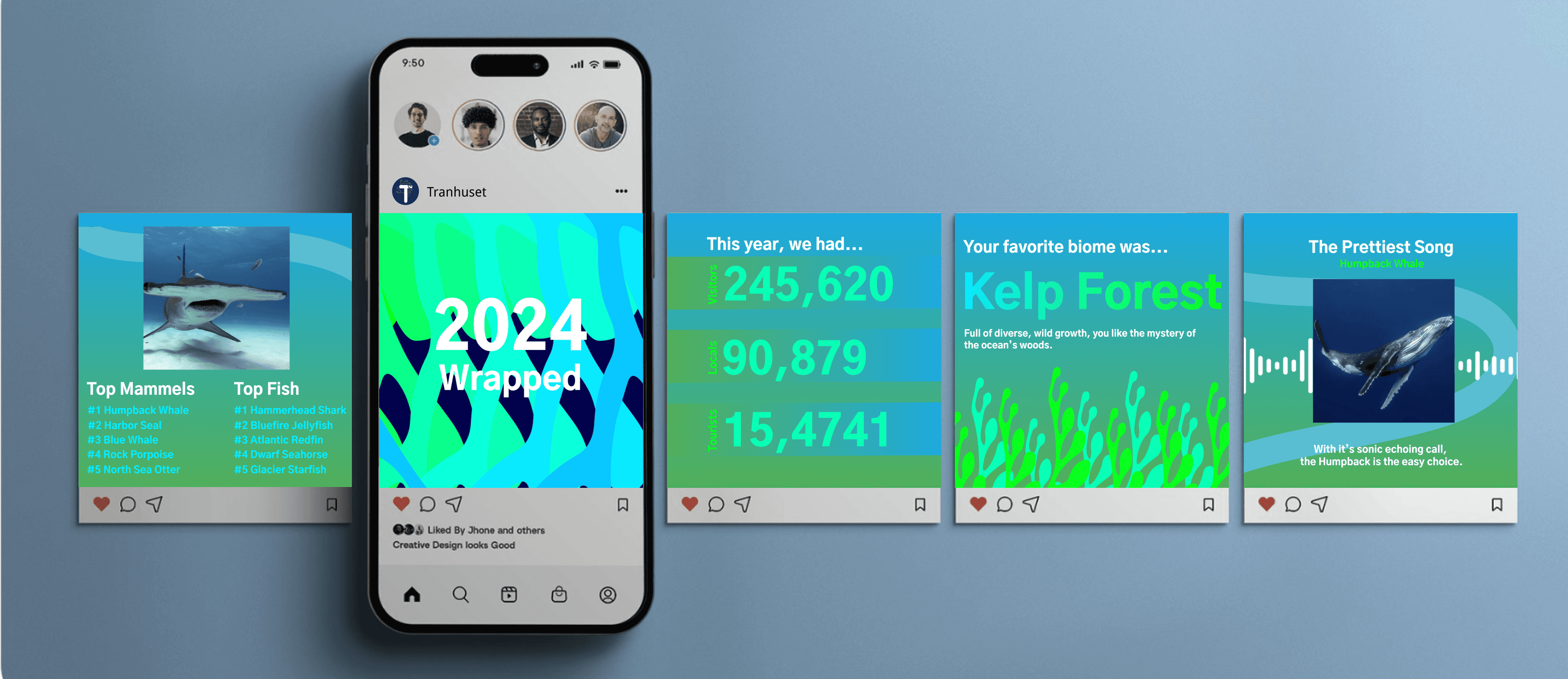
Here are some more examples of museum mockups to further demonstrate the execution of the design system on a larger public scale.
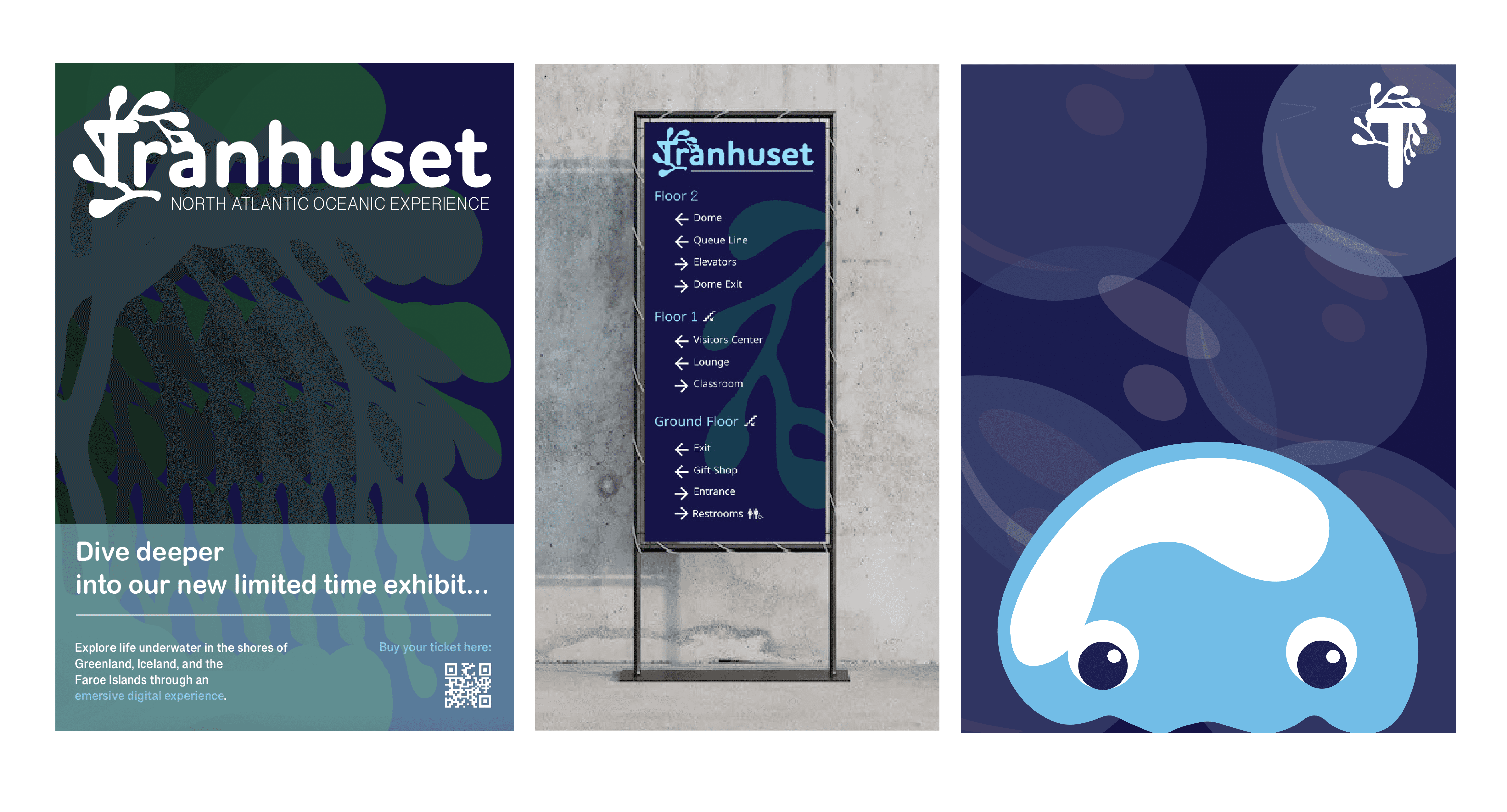
This design concept for Tranhuset encapsulates a true balance of organic versus orthogonal geometry, helping to convey the unique species of the North Atlantic through a clear and simple system.
Question about my work?
Olivia Bruhmuller
Oliviabruhmuller@gmail.com

North Atlantic Museum: Organic and Orthogonal
Tranhuset North Atlantic Oceanic Experience
4 months
Shipped
December, 2024
Overview
The North Atlantic Museum, located in the harbor of Copenhagen, has received grants to establish a new combined experience and learning center that will educate Danish locals about life in the North Atlantic. I have been given the exciting opportunity to assist in developing the new design system for the new Tranhuset exhibit.
Research
I began this project by researching, collecting data, and finding creative inspiration in my environment. I discussed business goals with the museum board, interviewed potential visitors to understand user needs, and visited the Louisiana Modern Art Museum in Denmark to gain inspiration from Anna Atkins’ cyanotypes of seaweed exhibit. I found that the greatest needs for this design were consistency and accessibility for families.
Question-storming
At the beginning of every design process, I give myself 60 seconds of undivided time to "questionstorm". I jot down as many questions as I possibly can without coming up with any answers.
"What oceanic symbiotic elements stand out to me?" "This kelp has a strange shape. how does it break down geometrically?" "What if I diagram the kelp strand to create a simple graphic?" "How can I make this graphic dynamic?" "Could the kelp be maluable?" "What if I find a font that carries the same geometric qualities?" "How can I create a mascot that derives from the same geometry?" "What makes a child curious?" "What makes an adult curious?" "What colors make people curious?" "How do I invoke curiosity about learning through a design system?"
Iterate and Explore
I then began to iterate, sketch, and play around with some ideas. I created a precedence map to demonstrate how the exploration of a few of these questions led to my final product.

Define
Using this precedence map, I could define my fonts, colors, character, and graphic motifs, and create the basic building blocks to help me move into the next phase of my design consistently.
Test
I met with peers, professors, and once again with the design director to make sure my design was hitting the brand comms and goals I originally had. Throughout this testing phase, I received critical feedback that my logo needed more variations and that my character needed more facial expressions, so I went back and reiterated a few times before moving into the execution phase.

Execute
Once I defined my rules, colors, and mascot, I was able to begin the deliverables to present to the board. This included UI for the Tranhuset app, a social media post, and some printed graphics.

For a mockup social media post, I took all the components of my brand guidelines and tweaked them to create this "Spotify Wrapped", demonstrating statistics and fun facts throughout a year of the Tranhuset Exhibit.

Here are some more examples of museum mockups to further demonstrate the execution of the design system on a larger public scale.

This design concept for Tranhuset encapsulates a true balance of organic versus orthogonal geometry, helping to convey the unique species of the North Atlantic through a clear and simple system.
Question about my work?
Olivia Bruhmuller
Oliviabruhmuller@gmail.com

North Atlantic Museum: Organic and Orthogonal
Tranhuset North Atlantic Oceanic Experience
4 months
Shipped
December, 2024
Overview
The North Atlantic Museum, located in the harbor of Copenhagen, has received grants to establish a new combined experience and learning center that will educate Danish locals about life in the North Atlantic. I have been given the exciting opportunity to assist in developing the new design system for the new Tranhuset exhibit.
Research
I began this project by researching, collecting data, and finding creative inspiration in my environment. I discussed business goals with the museum board, interviewed potential visitors to understand user needs, and visited the Louisiana Modern Art Museum in Denmark to gain inspiration from Anna Atkins’ cyanotypes of seaweed exhibit. I found that the greatest needs for this design were consistency and accessibility for families.
Question-storming
At the beginning of every design process, I give myself 60 seconds of undivided time to "questionstorm". I jot down as many questions as I possibly can without coming up with any answers.
"What oceanic symbiotic elements stand out to me?" "This kelp has a strange shape. how does it break down geometrically?" "What if I diagram the kelp strand to create a simple graphic?" "How can I make this graphic dynamic?" "Could the kelp be maluable?" "What if I find a font that carries the same geometric qualities?" "How can I create a mascot that derives from the same geometry?" "What makes a child curious?" "What makes an adult curious?" "What colors make people curious?" "How do I invoke curiosity about learning through a design system?"
Iterate and Explore
I then began to iterate, sketch, and play around with some ideas. I created a precedence map to demonstrate how the exploration of a few of these questions led to my final product.

Define
Using this precedence map, I could define my fonts, colors, character, and graphic motifs, and create the basic building blocks to help me move into the next phase of my design consistently.
Test
I met with peers, professors, and once again with the design director to make sure my design was hitting the brand comms and goals I originally had. Throughout this testing phase, I received critical feedback that my logo needed more variations and that my character needed more facial expressions, so I went back and reiterated a few times before moving into the execution phase.

Execute
Once I defined my rules, colors, and mascot, I was able to begin the deliverables to present to the board. This included UI for the Tranhuset app, a social media post, and some printed graphics.

For a mockup social media post, I took all the components of my brand guidelines and tweaked them to create this "Spotify Wrapped", demonstrating statistics and fun facts throughout a year of the Tranhuset Exhibit.

Here are some more examples of museum mockups to further demonstrate the execution of the design system on a larger public scale.

This design concept for Tranhuset encapsulates a true balance of organic versus orthogonal geometry, helping to convey the unique species of the North Atlantic through a clear and simple system.
Question about my work?
Olivia Bruhmuller
Oliviabruhmuller@gmail.com

